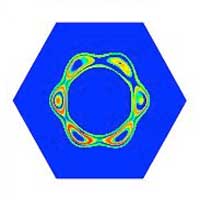 Researchers are searching for alternative materials to silicon with semiconducting properties that could form the basis for an alternative chip. 2D antimony could be that material.
Researchers are searching for alternative materials to silicon with semiconducting properties that could form the basis for an alternative chip. 2D antimony could be that material.
Monday, November 4, 2019
2D antimony holds promise for post-silicon electronics
 Researchers are searching for alternative materials to silicon with semiconducting properties that could form the basis for an alternative chip. 2D antimony could be that material.
Researchers are searching for alternative materials to silicon with semiconducting properties that could form the basis for an alternative chip. 2D antimony could be that material.
Light-based 'tractor beam' assembles materials at the nanoscale
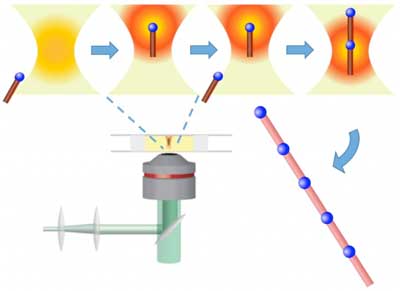 Researchers have developed a method that could make reproducible manufacturing at the nanoscale possible. The team adapted a light-based technology employed widely in biology - known as optical traps or optical tweezers - to operate in a water-free liquid environment of carbon-rich organic solvents, thereby enabling new potential applications.
Researchers have developed a method that could make reproducible manufacturing at the nanoscale possible. The team adapted a light-based technology employed widely in biology - known as optical traps or optical tweezers - to operate in a water-free liquid environment of carbon-rich organic solvents, thereby enabling new potential applications.
Nanowire technology poised to lower cost and expand applications for transparent LED screens
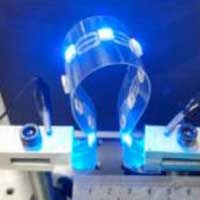 For the first time, transparent conductive circuits made of silver nanowires used to make rigid and flexible transparent displays.
For the first time, transparent conductive circuits made of silver nanowires used to make rigid and flexible transparent displays.
Sensing magnetism in atomic resolution with just a scanning tunneling microscope
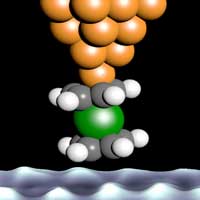 Researchers use single molecule on microscope tip as a sensor to detect magnetic moments with unprecedented spatial resolution.
Researchers use single molecule on microscope tip as a sensor to detect magnetic moments with unprecedented spatial resolution.
Nanoparticle drug delivery provides pain relief and more effective opioid alternative in animal study
 An international team of researchers has used nanoparticles to deliver a drug - one that previously failed in clinical trials for pain - into specific compartments of nerve cells, dramatically increasing its ability to treat pain in mice and rats.
An international team of researchers has used nanoparticles to deliver a drug - one that previously failed in clinical trials for pain - into specific compartments of nerve cells, dramatically increasing its ability to treat pain in mice and rats.
'Hot' electrons in metallic nanostructures - non-thermal carriers or heating?
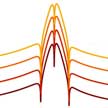 These two pictures, heating vs 'hot electrons', are typically presented as orthogonal, and theories either treat one or the other. In a recent work, these two pictures were merged into a single theoretical framework, which enabled them to fully evaluate both the electron distribution and the electron and lattice temperatures of an illuminated nanoparticle.
These two pictures, heating vs 'hot electrons', are typically presented as orthogonal, and theories either treat one or the other. In a recent work, these two pictures were merged into a single theoretical framework, which enabled them to fully evaluate both the electron distribution and the electron and lattice temperatures of an illuminated nanoparticle.
Scientists spy unstable semiconductors
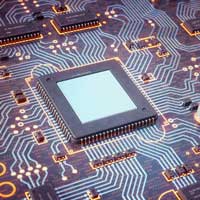 Scientists have, for the first time, spotted previously unseen 'instabilities' on the surface of a common compound semiconductor material.
Scientists have, for the first time, spotted previously unseen 'instabilities' on the surface of a common compound semiconductor material.
A memory effect at single-atom level
 An international research group has observed new quantum properties on an artificial giant atom. The quantum system under investigation apparently has a memory - a new finding that could be used to build a quantum computer.
An international research group has observed new quantum properties on an artificial giant atom. The quantum system under investigation apparently has a memory - a new finding that could be used to build a quantum computer.
Transformative electronics systems to broaden wearable applications
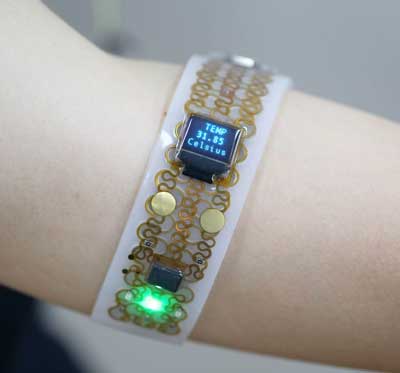 Imagine a handheld electronic gadget that can soften and deform when attached to our skin. This will be the future of electronics we all dreamed of.
Imagine a handheld electronic gadget that can soften and deform when attached to our skin. This will be the future of electronics we all dreamed of.
Subscribe to:
Comments (Atom)
